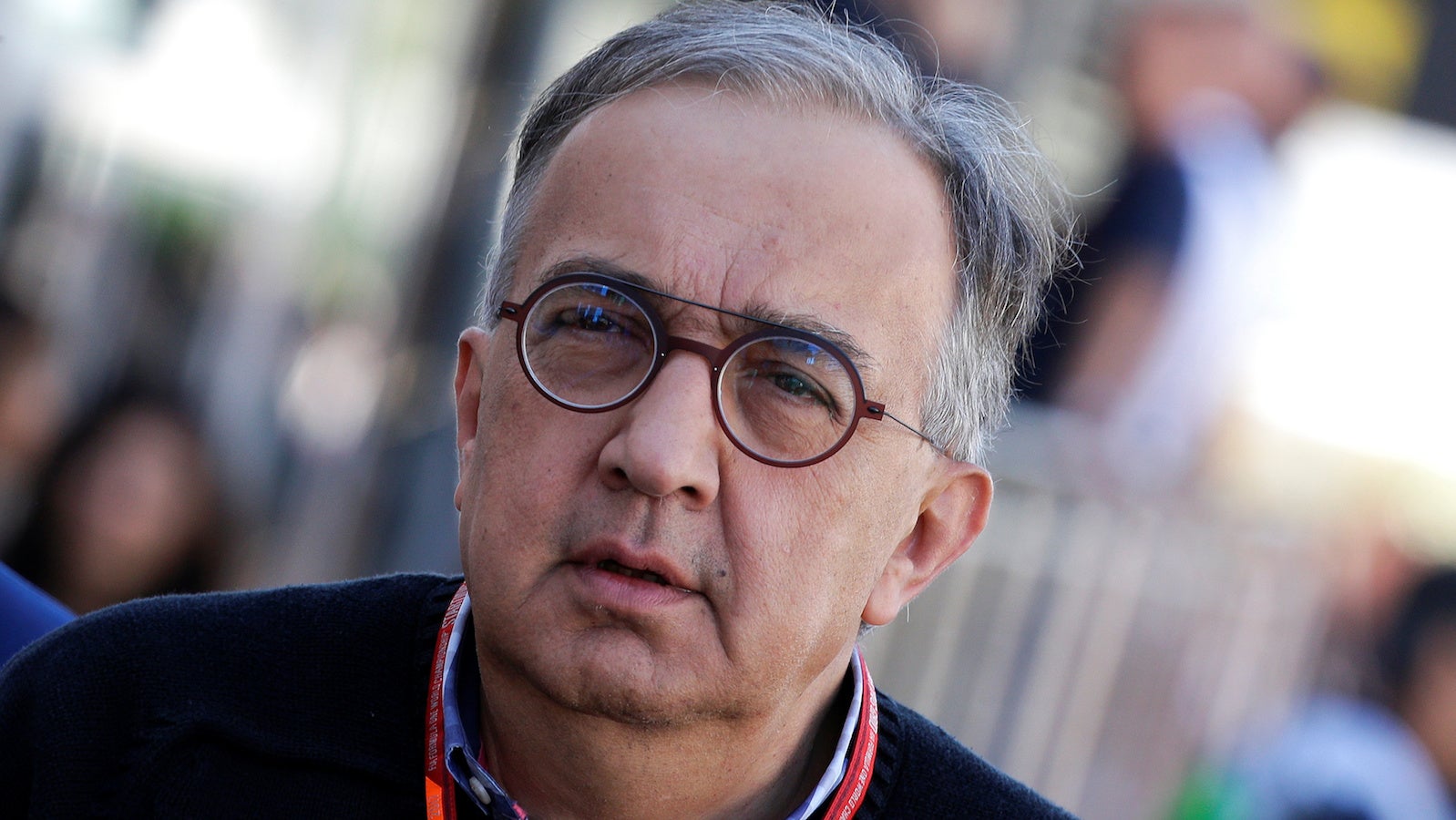Sergio Marchionne saved the Italian automotive industry, but not for Italy
There is little doubt that Sergio Marchionne, the CEO of Fiat Chrysler Automobiles who died today at 66 after complications from shoulder surgery, will be remembered as a true genius of the automotive industry.


There is little doubt that Sergio Marchionne, the CEO of Fiat Chrysler Automobiles who died today at 66 after complications from shoulder surgery, will be remembered as a true genius of the automotive industry.
As CEO of Fiat, Italy’s biggest automaker, he took over at a failing company in a battered economy and turned it around in under two years. Fiat merged with Chrysler, and the Fiat 500, which after World World II had been a symbol of Italy’s rising middle class, was made in the US—and became more and more popular on America’s streets.
The Wall Street Journal notes that Fiat was worth less than $7 billion (paywall) when Marchionne became CEO in 2004, and would be valued 13 years later at $60 billion, including the market value for Ferrari, which was spun off from Fiat in 2015. Undoubtedly, Marchionne put Fiat on the map as an automaker of global scale.
Except he worked most of his magic well outside of Italy.
Turning around the company first meant cuts and layoffs. Now, Fiat is bigger than ever, but the factories that had made its history—Mirafiori in Turin, Pomigliano d’Arco in Naples—are a fraction of what they had once been. With the aim of focusing only on niche production in Italy, rather than fighting a lost battle of competitiveness in mass production, Fiat Chrysler counts Italian workers as just a small share of its global workforce—3,500 out of a total of more than 130,000.
Under Marchionne, Fiat Chrysler put its legal headquarters in the Netherlands. The fiscal headquarters went to London. The core of the business is in Detroit. Meanwhile, Italian taxpayers have been paying, through the years of Fiat’s global boom as they did prior to it, the unemployment benefits of thousands of Italy’s former Fiat employees.
While there has been growth in Italian jobs at Fiat since 2004, some critics accused Marchionne of depleting workers’ rights and essentially marking the death of an Italian industry under the disguise of a global triumph—operation successful, patient dead.
Yet the trajectory of Fiat in the past decade or so seems indicative of two Italian structural issues, rather than a failure of Marchionne’s making.
First, there is the issue of Italian mass production in a globalized world. It’s the same problem many other manufacturing economies are dealing with: In a world of mass production, where competitiveness is measured in cost containment, wealthy countries are destined to lose.
And then there is the collection of problems that prevented Italy from truly benefiting, beyond the image and pride, from Fiat’s success: namely, Italian business laws. If it wasn’t convenient to keep the fiscal headquarters of the world’s sixth-largest automaker in the country where it was born, then that’s on Italy. Fiat still pays taxes in Italy on its Italian production, but taxes on revenue from its global business are paid in the UK, where the company established its primary tax residency a few years ago.
A country cannot and should not rely on business leaders to do what is best for its people at the cost of the company, but it should make an effort to make it advantageous to do so—and Italy, notoriously, does not. The costs of labor and taxes are crippling—if not for Fiat, which ran off to somewhere less demanding, then for many other Italian companies and small businesses still struggling to keep afloat.
For many of them, it’s a choice between giving up, or leaving. Many choose the latter—out of need, or desire of success. That’s the story of Italy, and the story of Fiat. Coincidentally, it had been the story of the Italian-born, Canadian-raised Marchionne, too.
But Marchionne wasn’t hired to fix Italy. He was hired to make Fiat the biggest and best it could be, and he did that job exceptionally well.